Via Francigena Part 4 route map |
Corbeny ~ Saint-Thierry ~ Reims ~ Trépail ~ Châlons-en-Champagne ~ Corbeil ~ Brienne-le-Château ~ Bar-Sur-Aube |
Distance: 203km (575/1,900km) |
Time (for us, ie slow): 9 days |
Ascent: 1,331m |
Vineyards, Vineyards, Vineyards
Okay, we’ll admit it, this is one of the areas we’ve been secretly waiting for: the rolling hills of CHAMPAGNE. And on the Via Francigena you see it at its most authentic – this little pilgrim path manages to wind past elegant tasting bars, pristine vineyards, and rambling villages that depend for survival on the golden grapes. We’ve been in the proper Champagne.
But where were we? The long walk from Corbeny (where we left you) meant we turned up at the monastery of Saint-Thierry, first stop in Champagne, bedraggled and late. But, like our convent in Wisques, what a place to find yourself: a towering gatehouse, a sweeping drive shaded by huge trees, leading to a tall and imposing Georgian hall. We wandered aimlessly in the grounds until we found a smiling nun who led us back to the gatehouse, and to a little pilgrim bedroom on the first floor. Sunlight was still pouring in, swallows flitted past outside the window, and everything had this warm, golden glow.
Like a lot of places on the Via Francigena, it felt like we had found a hidden nook of the world. Somewhere you wouldn’t know existed otherwise, but with its own secret charm.
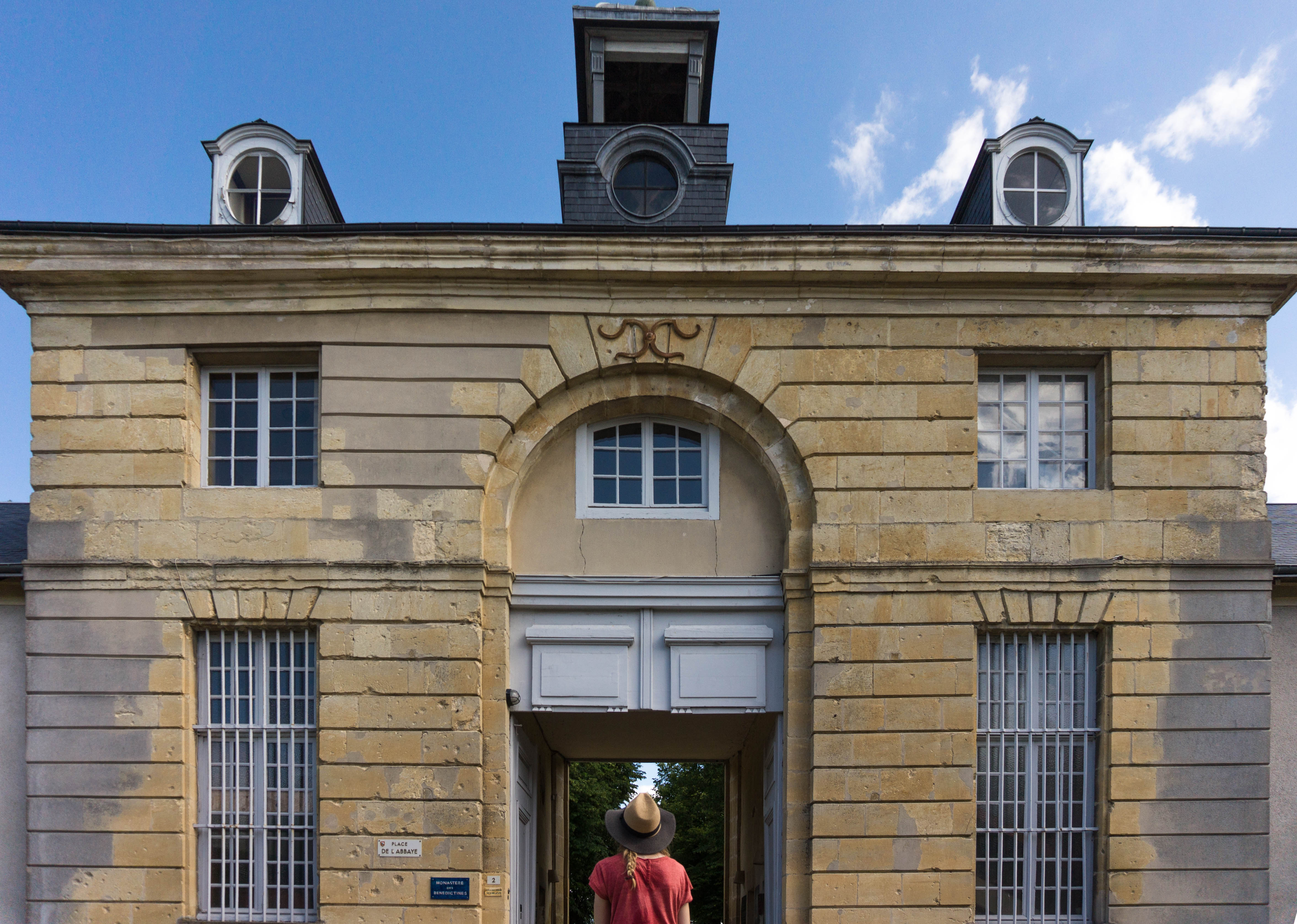
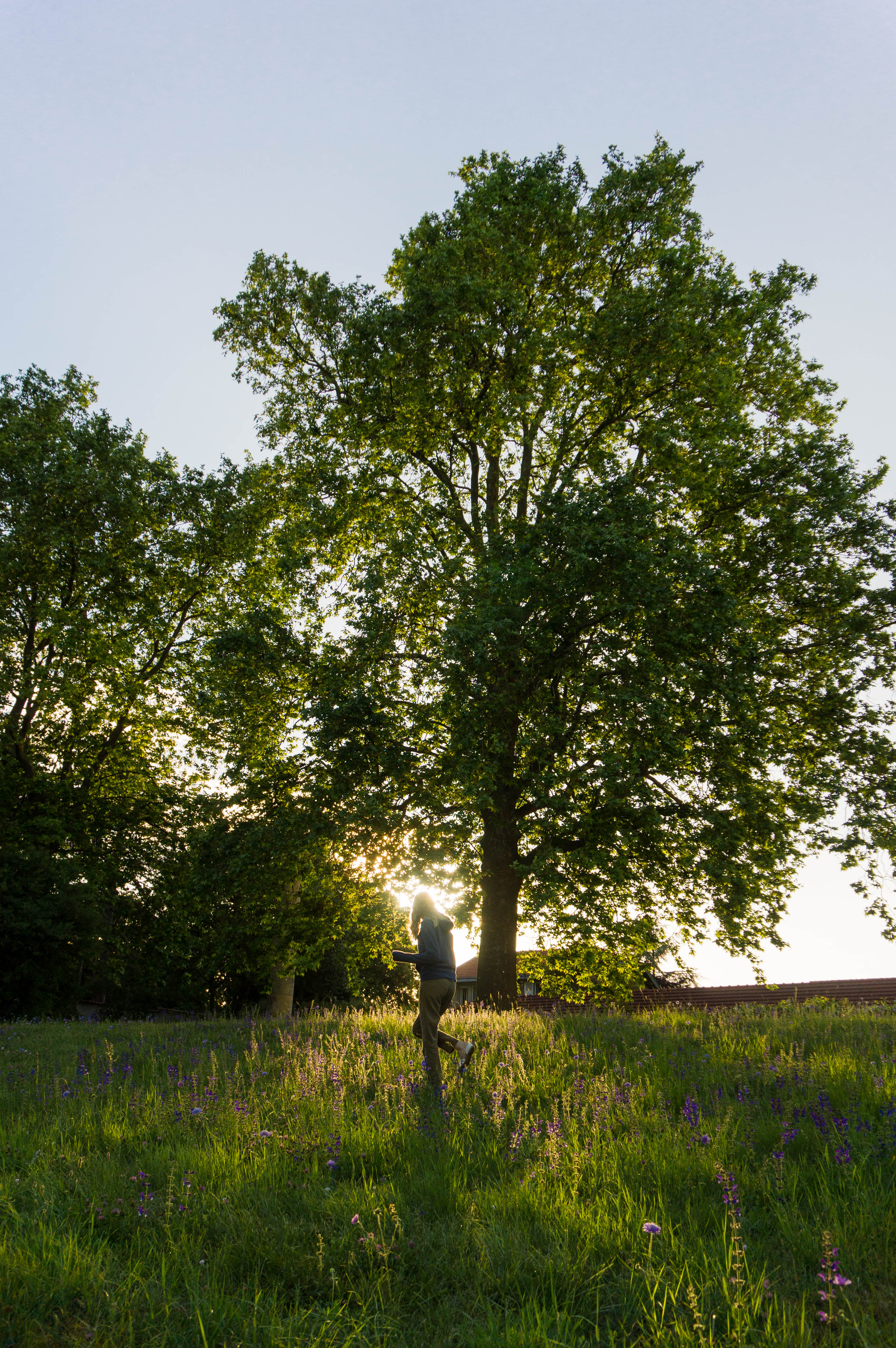
At the guest dinner that night, a kindly Belgian lady told us that around the convent there were vines – serious vines. ‘Oh yes,’ she said, pouring herself an enoooormous glass of wine, ‘One minute away, special vines. Eeeeeverywhere.’ Afterwards she walked us to a gate hidden in a hedge. Ducking through we found ourselves looking at row upon row of lush green vines, stretching away before us in perfect lines.
‘These,’ kind-Belgian-lady said dramatically, ‘are the vineyards of Veuve Cliquot.’
There was nothing and nobody there except vines, swaying gently in the breeze. The city of Reims, capital of Champagne and our next destination, glittered in the distance. The Via Francigena’s introduction to Champagne.
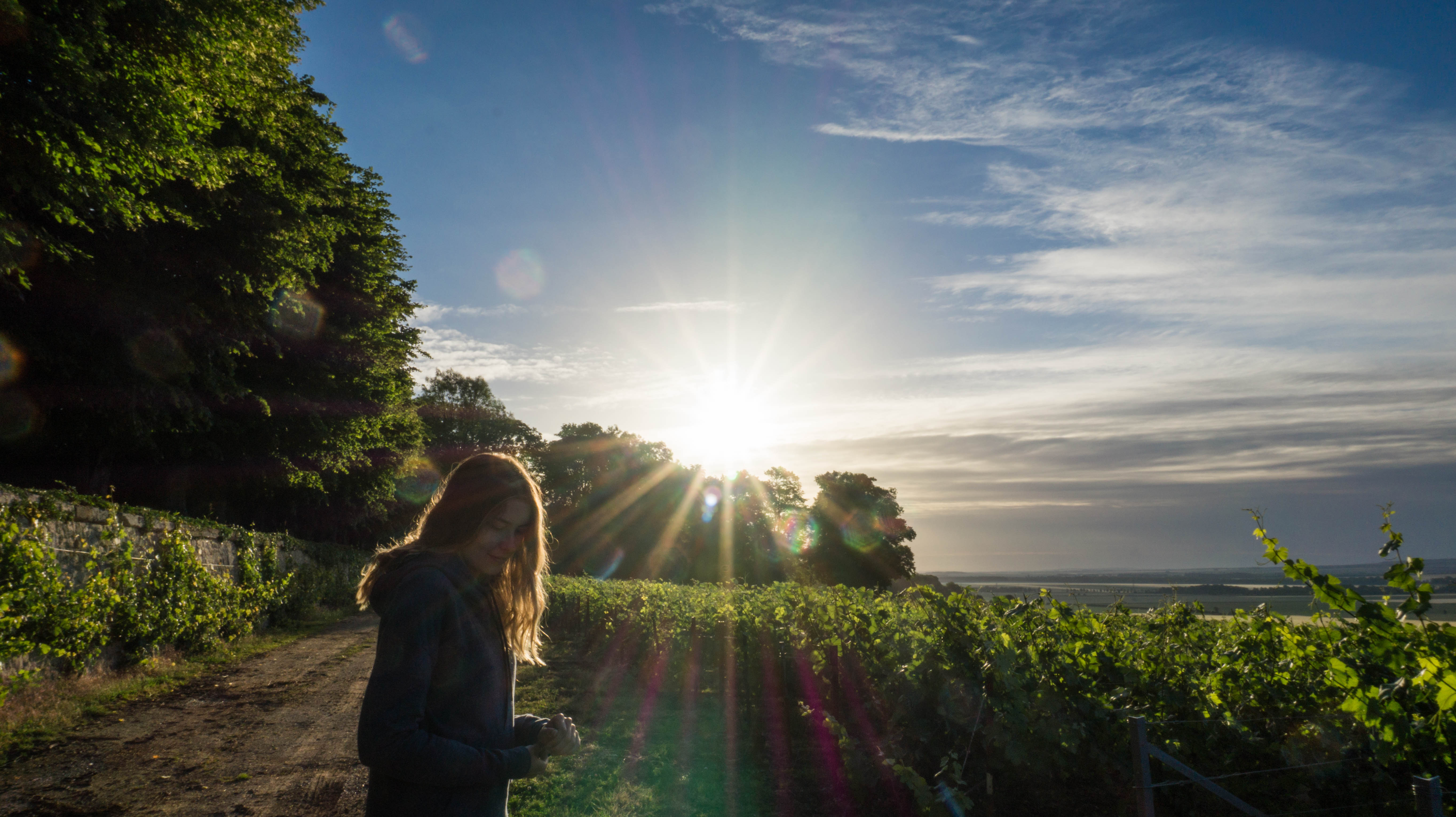
We walked quickly the next day along the canal and into Reims. The biggest place we’ve been to on the Via Francigena thus far, it was an awesome sight, bustling and cosmopolitan. We walked in a daze along Reims’ elegant boulevards, straight to the huge Gothic cathedral in the centre. Here we sat, eating baguettes and having a glass of Champagne, and wondered whether we could come up with our own way to explore the city…
And we did. We plotted a little walking route, wending its way through the sights, the pretty streets & of course Reims’ Champagne caves too. Go take at our walking tour of Reims and let us know what you think!
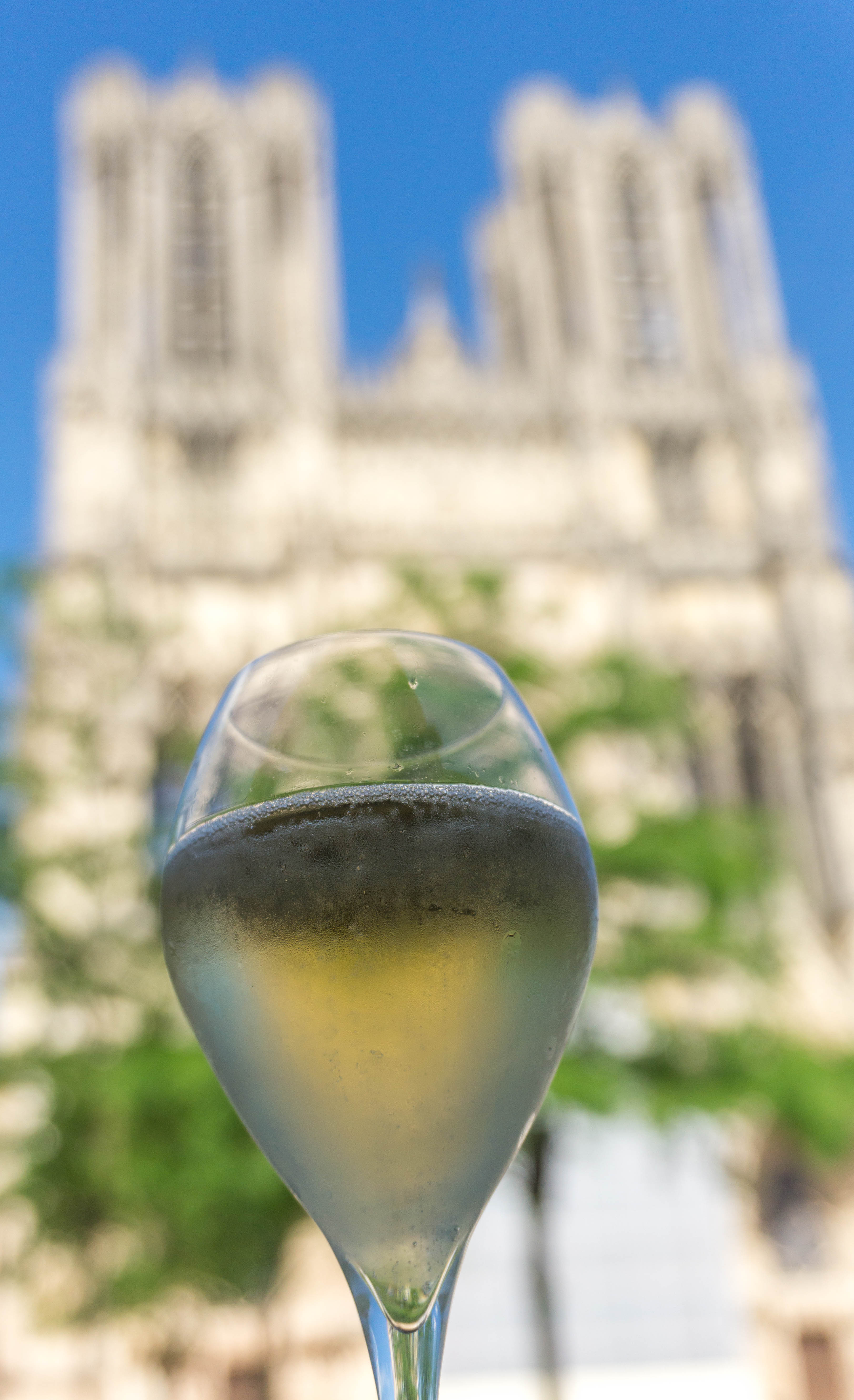
But now the Via Francigena pushed us ever on: out from the city and into the countryside beyond. And here we hit upon the old, real Champagne.
It began when we came upon this one little knoll, barely a hill in the flat landscape. It was quiet and green, apparently inconspicuous. But covered, carpeted, swathed, smothered, in vines.
And it’s here that you find the vineyards of the biggest and oldest Champagne producers in the world, all together. And amazingly, the Via Francigena’s chalk white path winds straight through them all. It’s like one of those bus routes that tour celebrity houses: Moët & Chandon to your left, Taittinger straight on, the windmill of G.H. Mumm right here. The Hollywood Walk of Champagne and the route to Rome all in one, and we loved it.
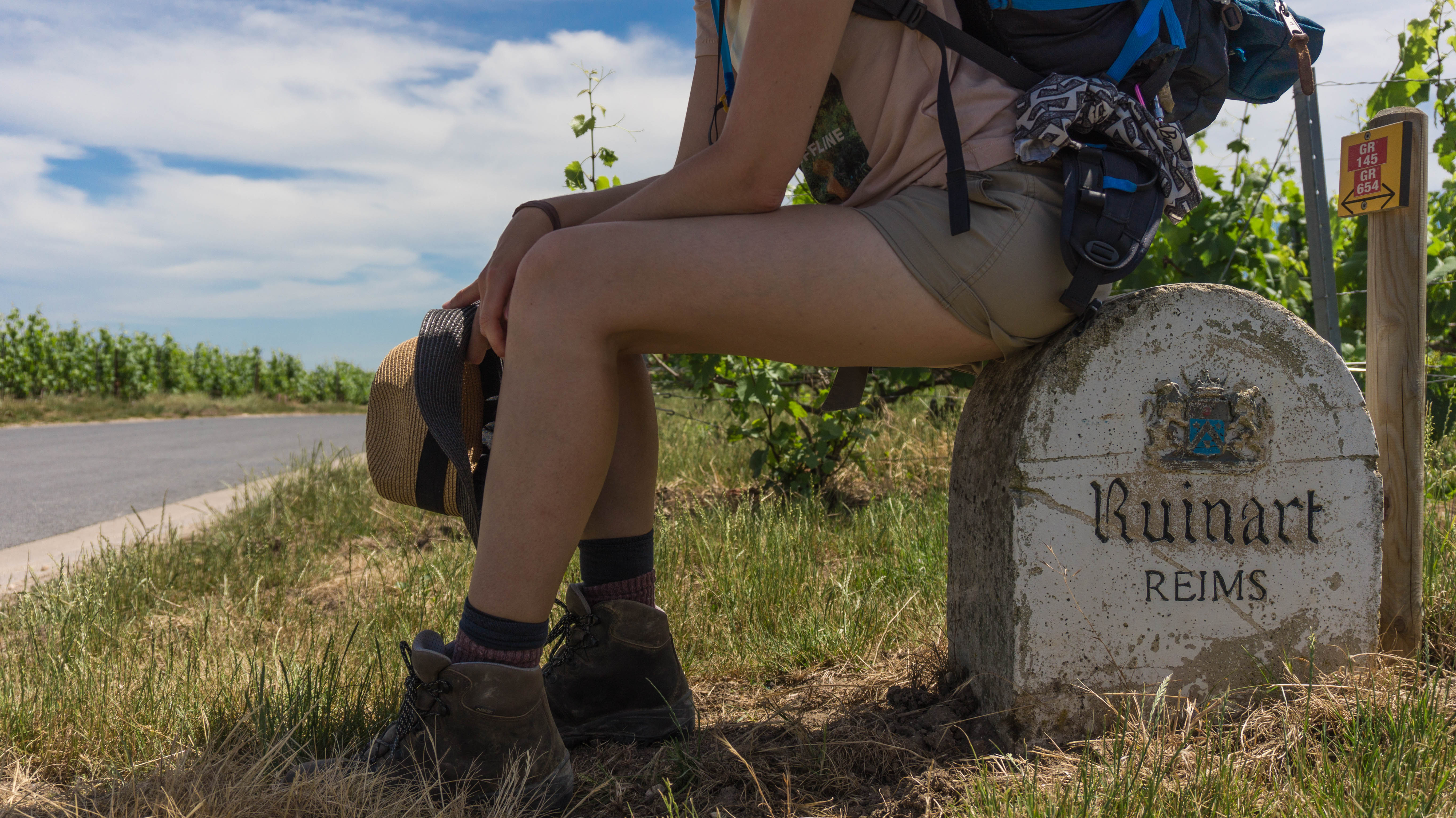
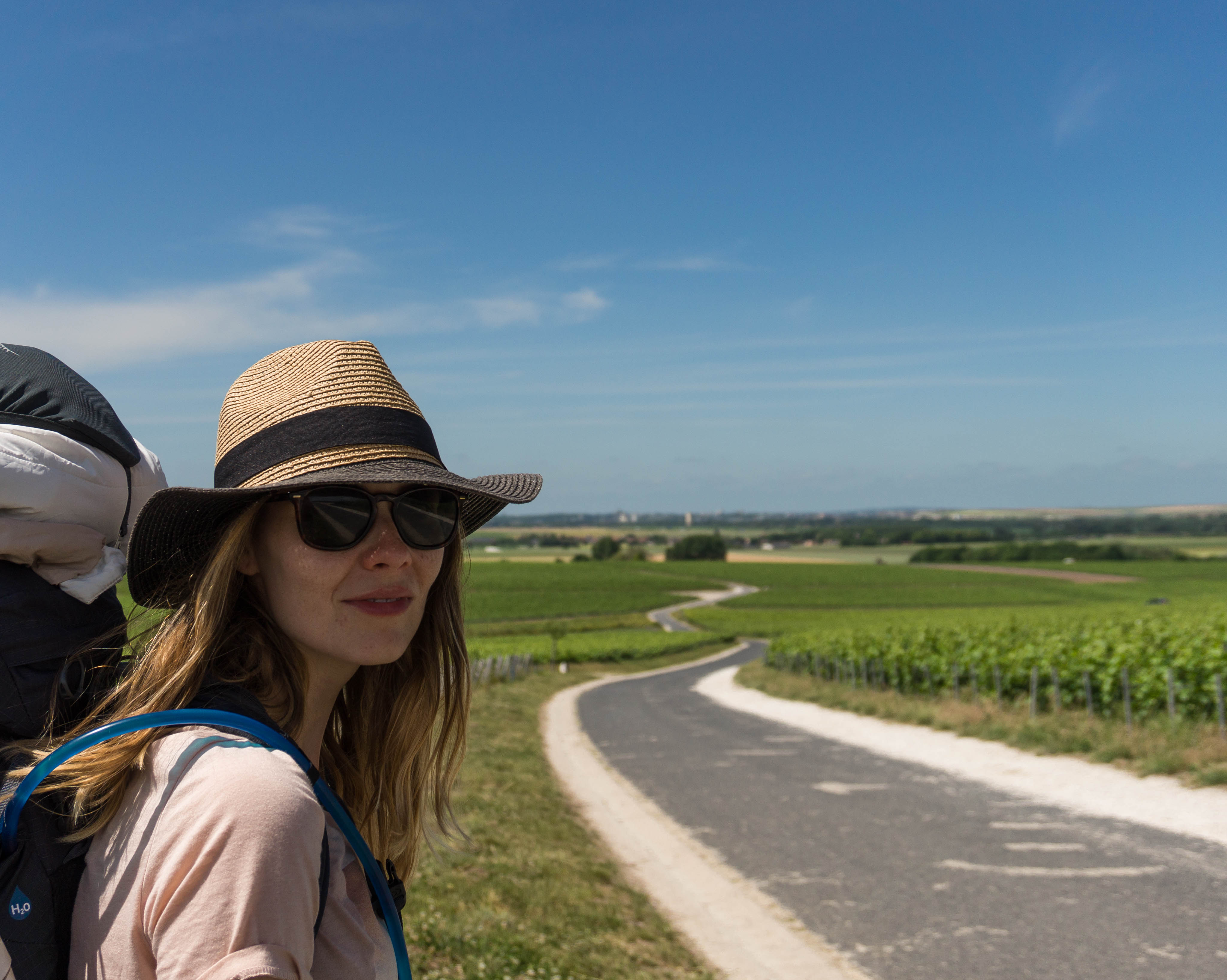
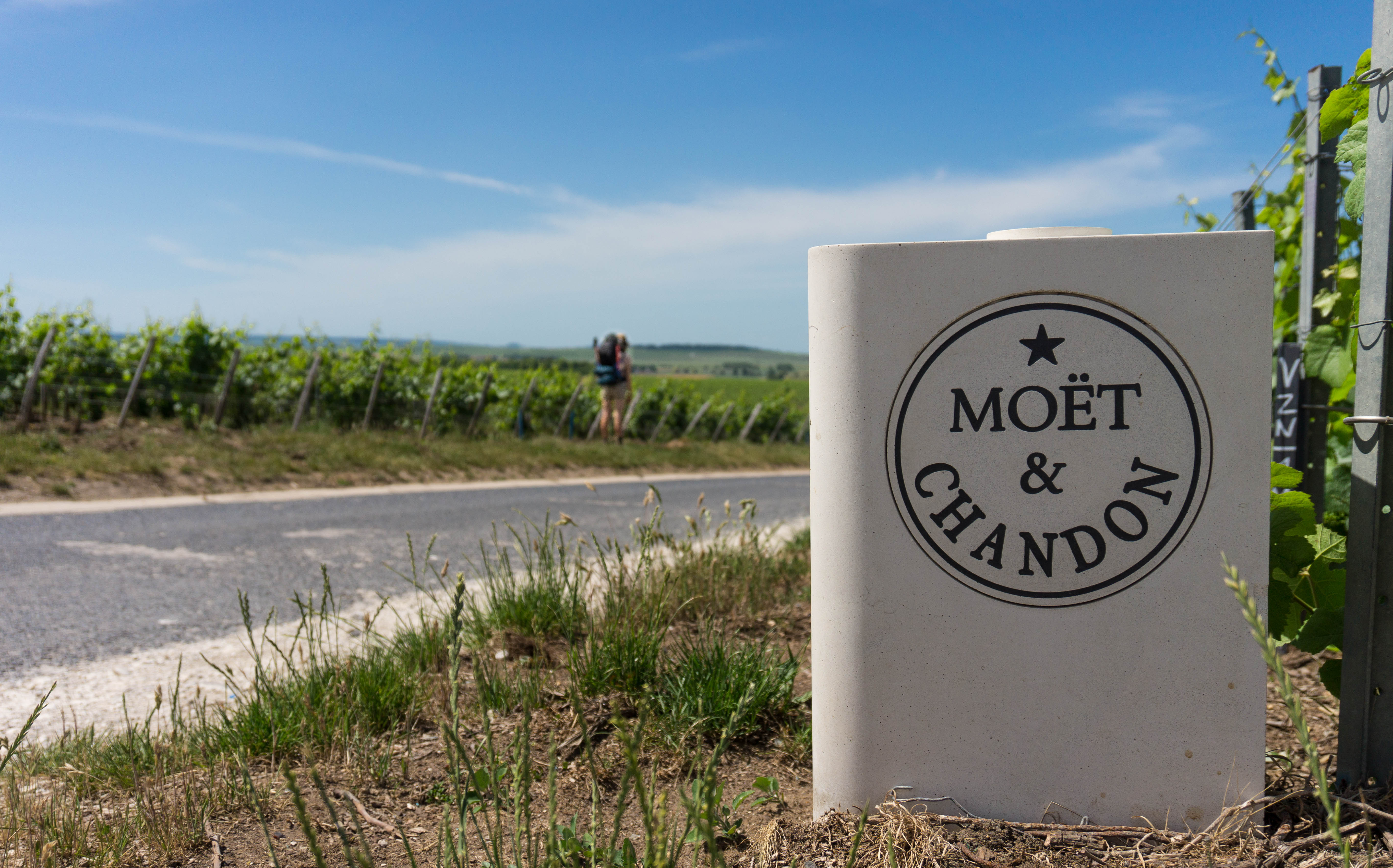
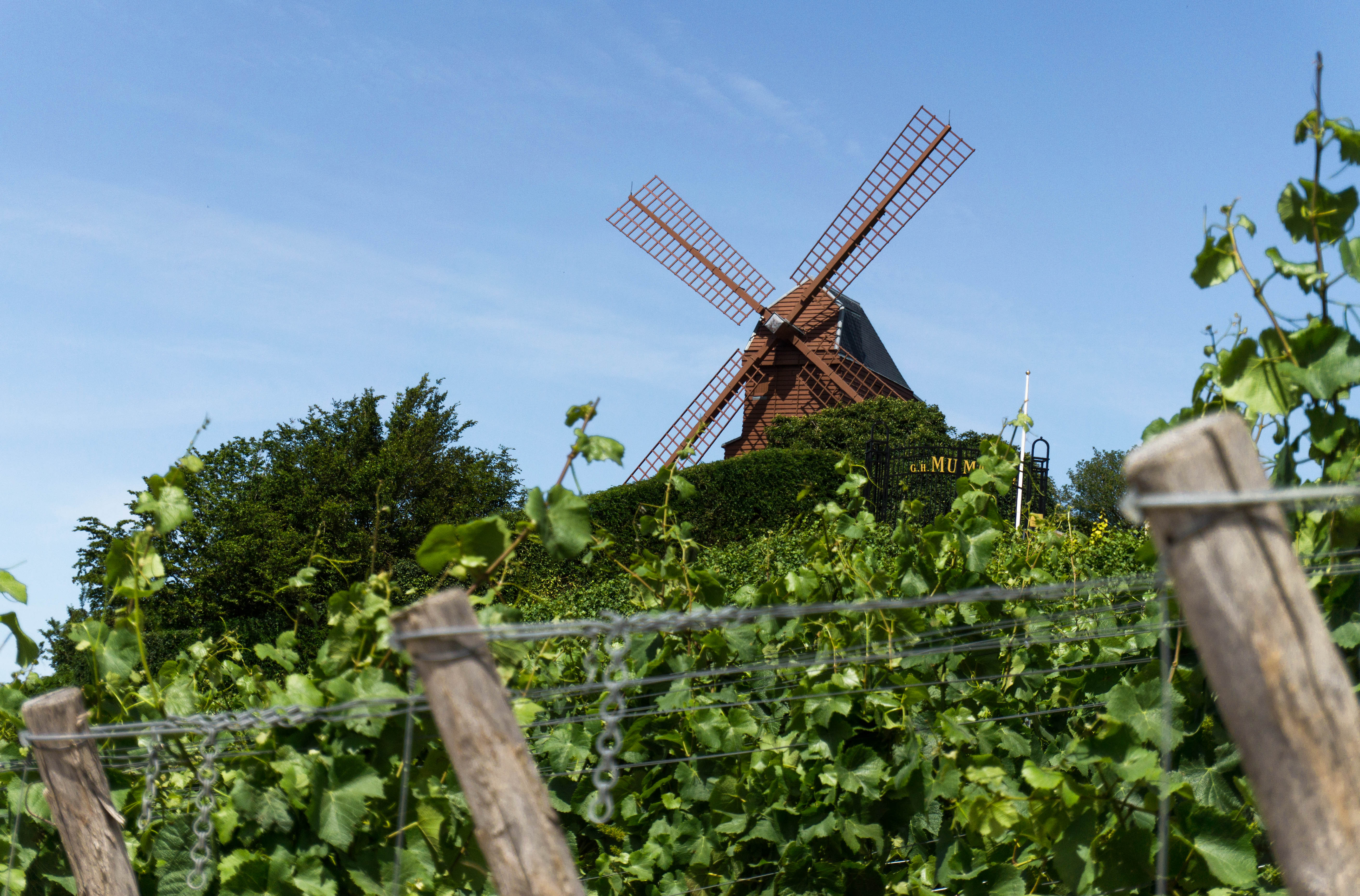
The vineyards were busy: white vans buzzed through the lanes through the fields, people everywhere working, working, working on the vines. These workers live in the old, gorgeous villages that still sit within the vineyards. Of course this means these villages -Verzy, Verzanay, Trépail- are squished into tiny spaces, hemmed in by militant lines of vines. But for the person wandering through, that’s what makes them so alluring: these dark-fronted, half-timbered beauties, over-hanging the crooked streets. We stayed in Trépail, taken in by a rosy-cheeked lady who gave us local rosé out the fridge, stoppered with a champagne cork.
This is what Champagne is really like: industrious, rustic, beautiful.
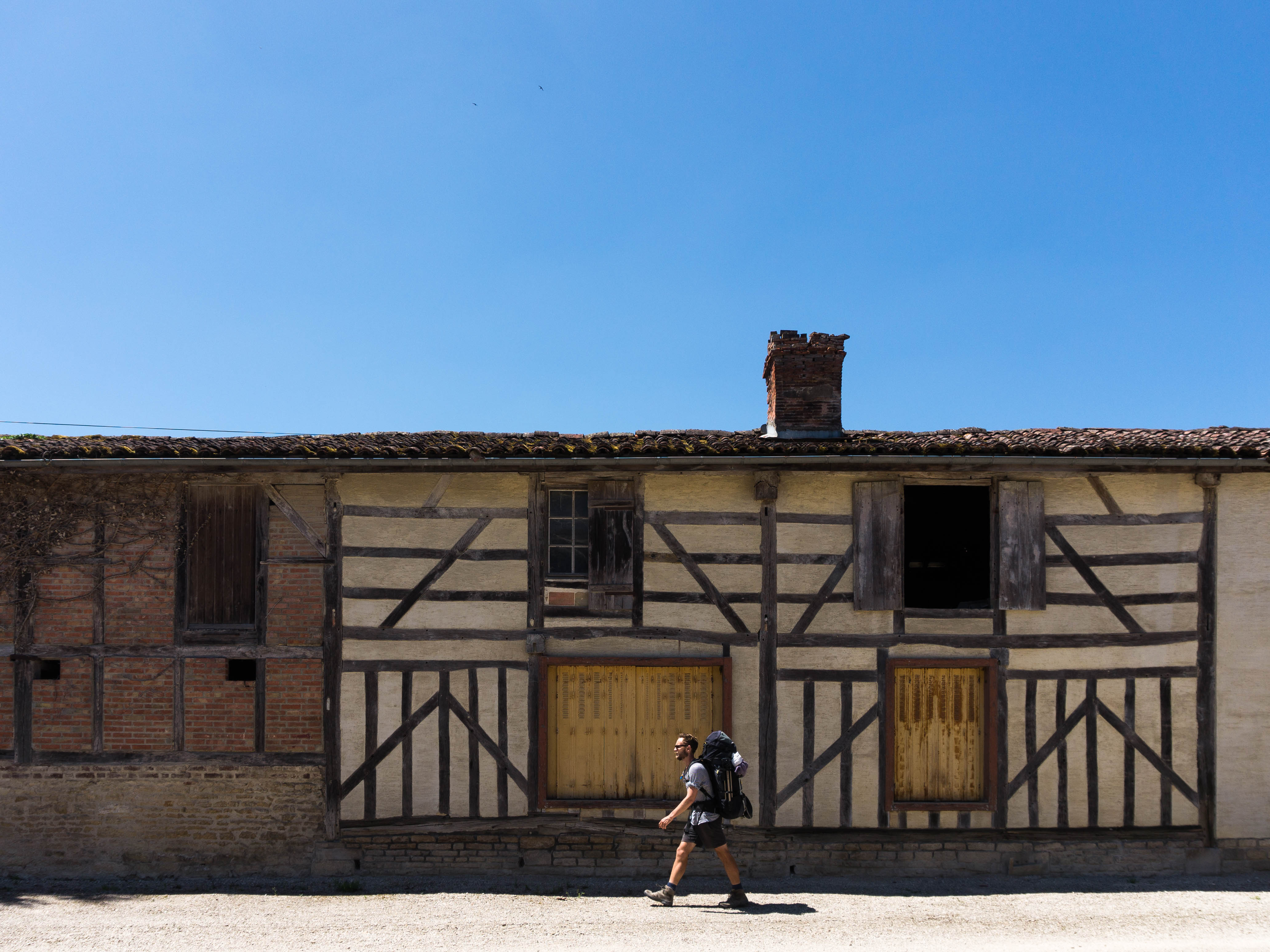
We have become very used to these timbered façades walking through the départements of Champagne-Ardenne, Marne and Aube. And Champagne’s biggest-town-but-one, Châlons-en-Champagne, had that pretty wooden chocolate box feel too, each building a shop selling bottles or bread.
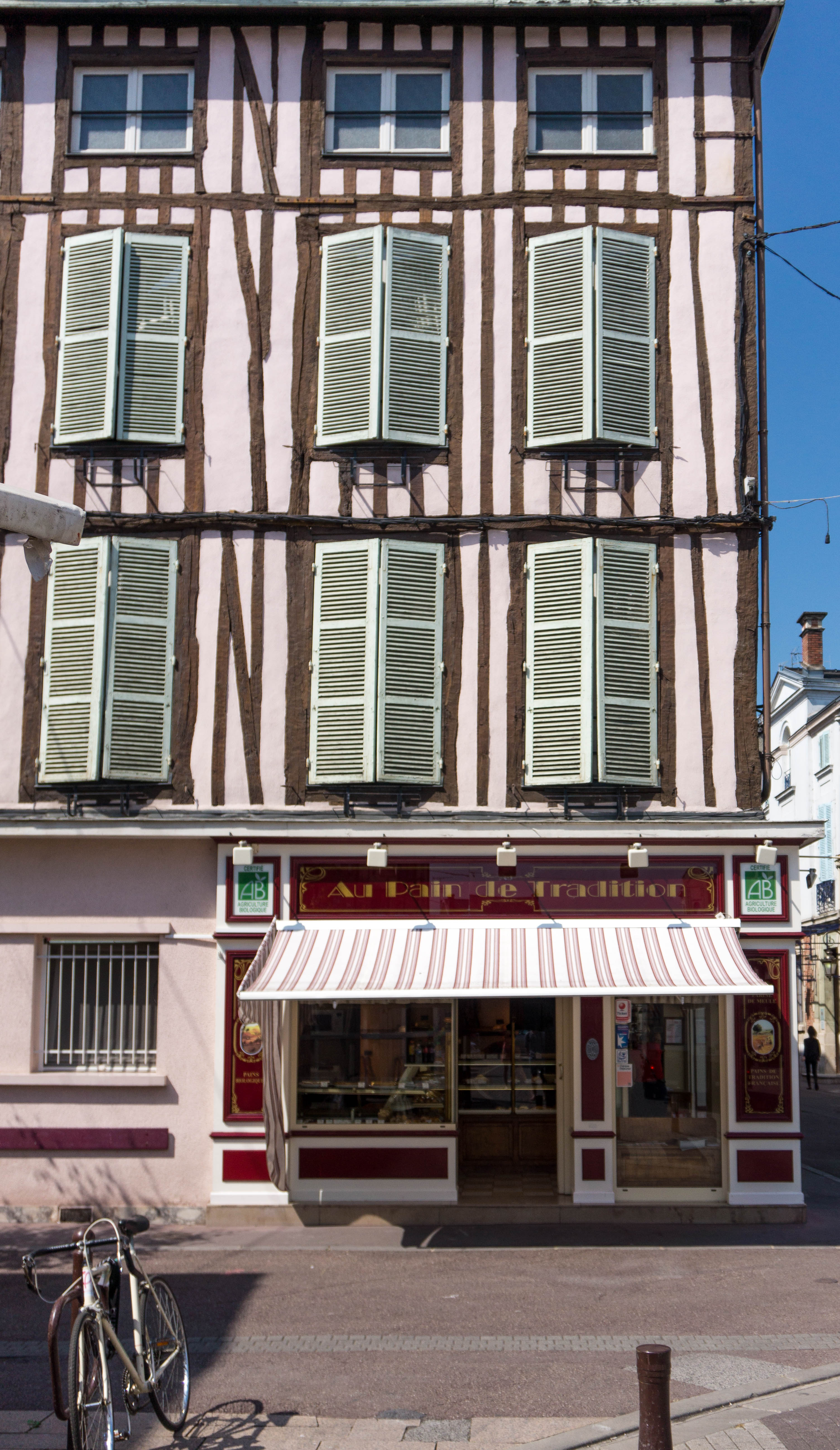
But not all of Champagne is covered in greenery. For three days we walked along the ancient Roman road: 75km of straight white gravel track. We passed under giant wind turbines and alongside dusty brown fields. These were hot, tiring days, days where we felt far, far away.
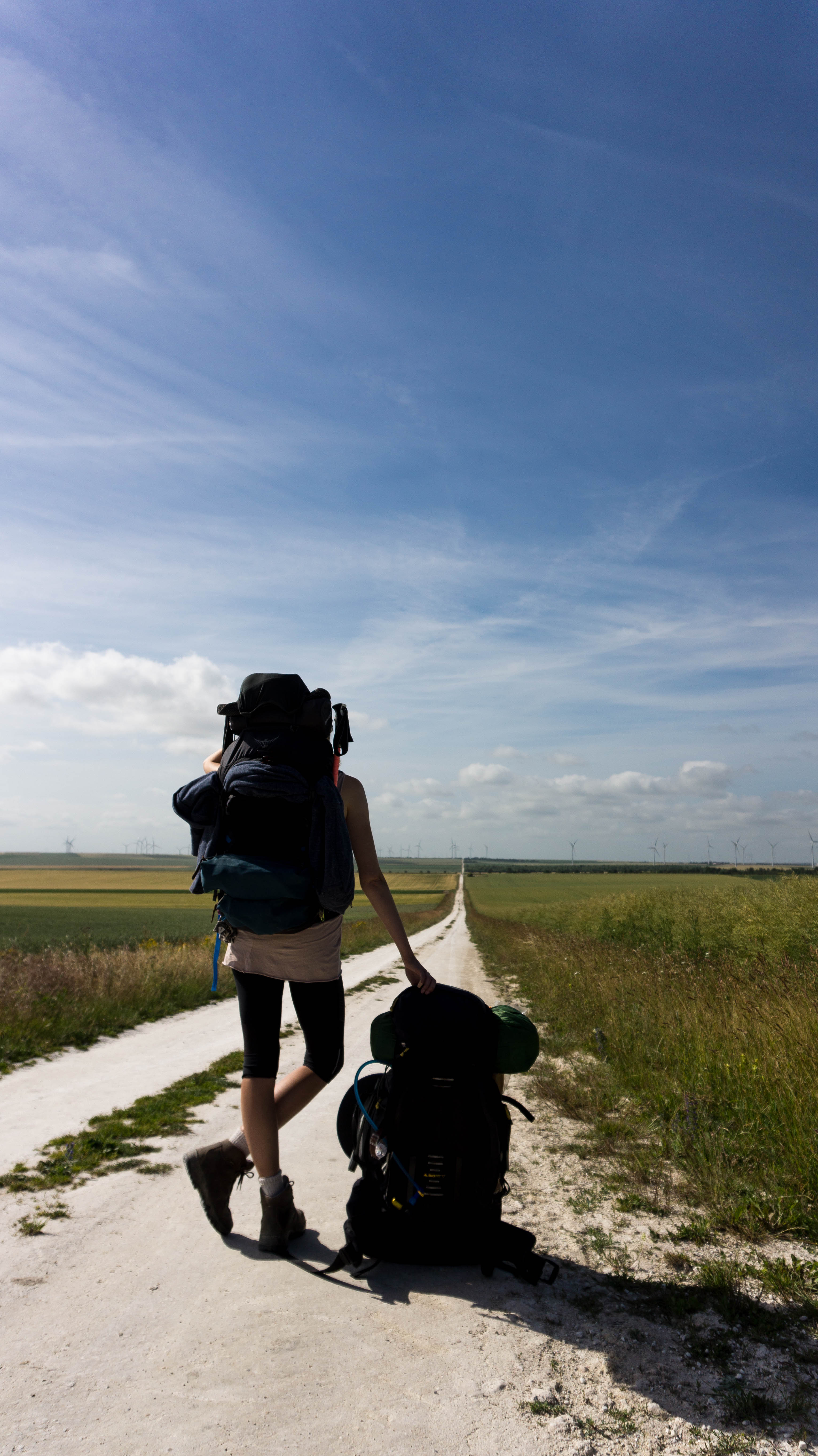
For a bit on the Roman Road we followed Napoleon, who marched the same route two hundred years ago, off to take over the world. The little town of Brienne-le-Château is Napoleon-mad, it being the place he attended military cadet school from 1779-84. Funny, this isn’t the last we’ll hear of Napoleon either, as our upcoming journey through the Alps mirrors his too (Napoleon summit inspo!)
But we eventually left Champagne behind in Bar-sur-Aube, a town hazy with heat when we arrived one blistering afternoon. Apparently hallucinating we mistook a kebab shop for an ice cream parlour, but drank all their chilled drinks anyway. When it got cooler, we walked along the lazy river Aube, and those now-familiar stone and timber streets. One last glass of Champagne.
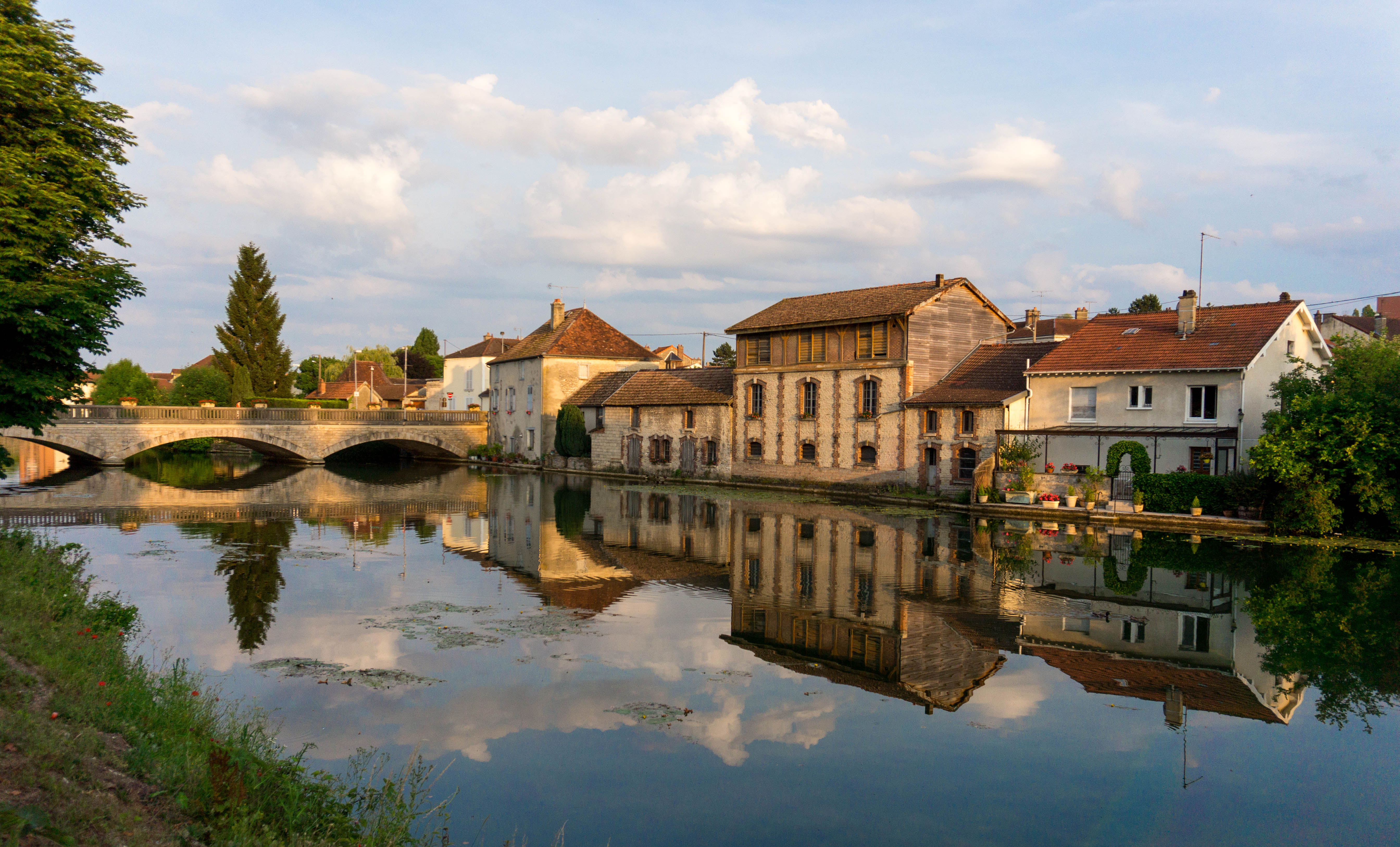
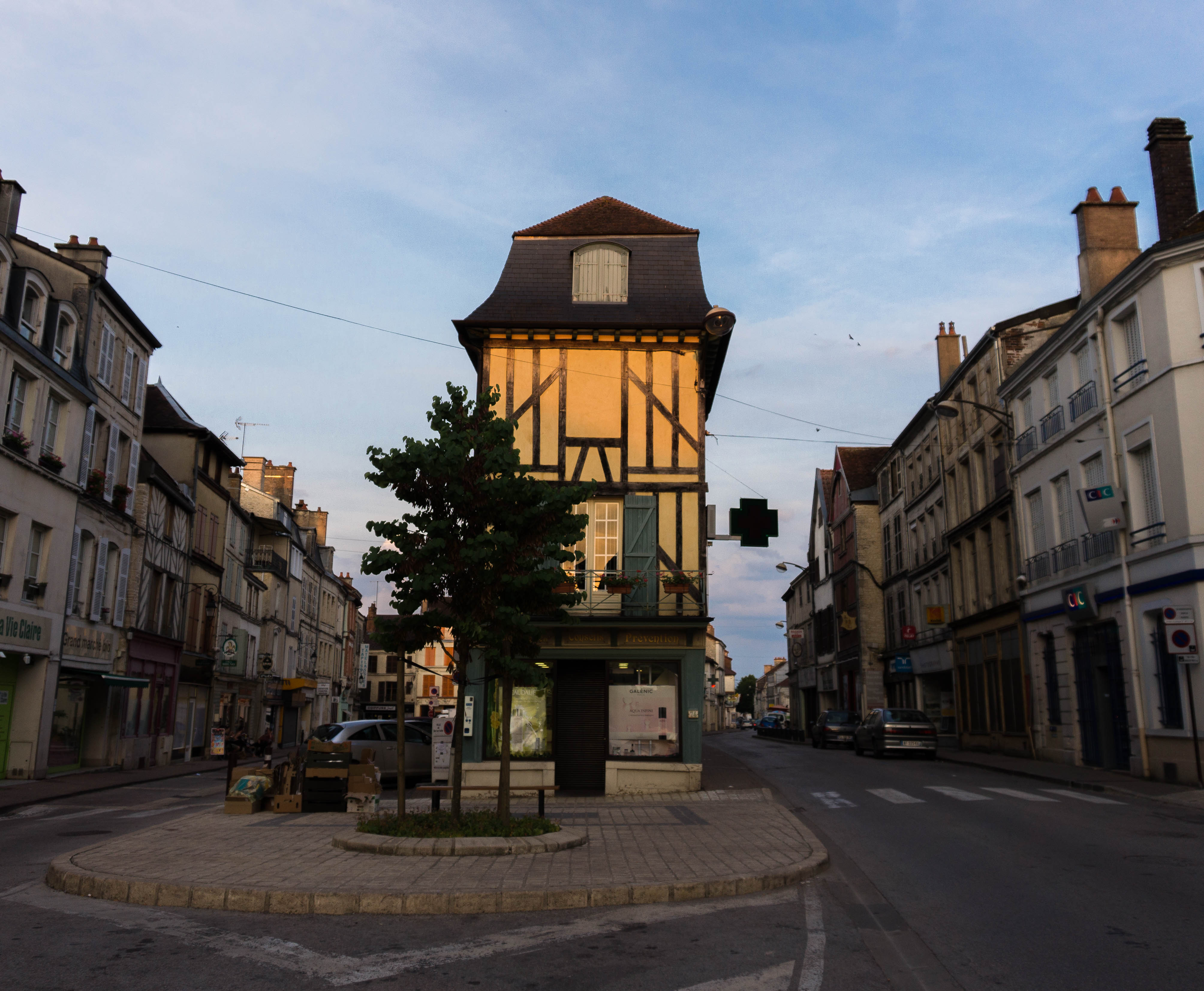
Champagne had been both what we did and didn’t expect. Yep, the rolling, manicured greenery, the exclusive cellars and expensive shops. But also still working communities, still living in ancient vineyard villages – and lots of life beyond bottles of bubbly.
But the landscape was indeed changing. Tree-covered hills surrounded Bar-sur-Aube, beyond which the last of the vineyards were choked off by thick, dark woodland.
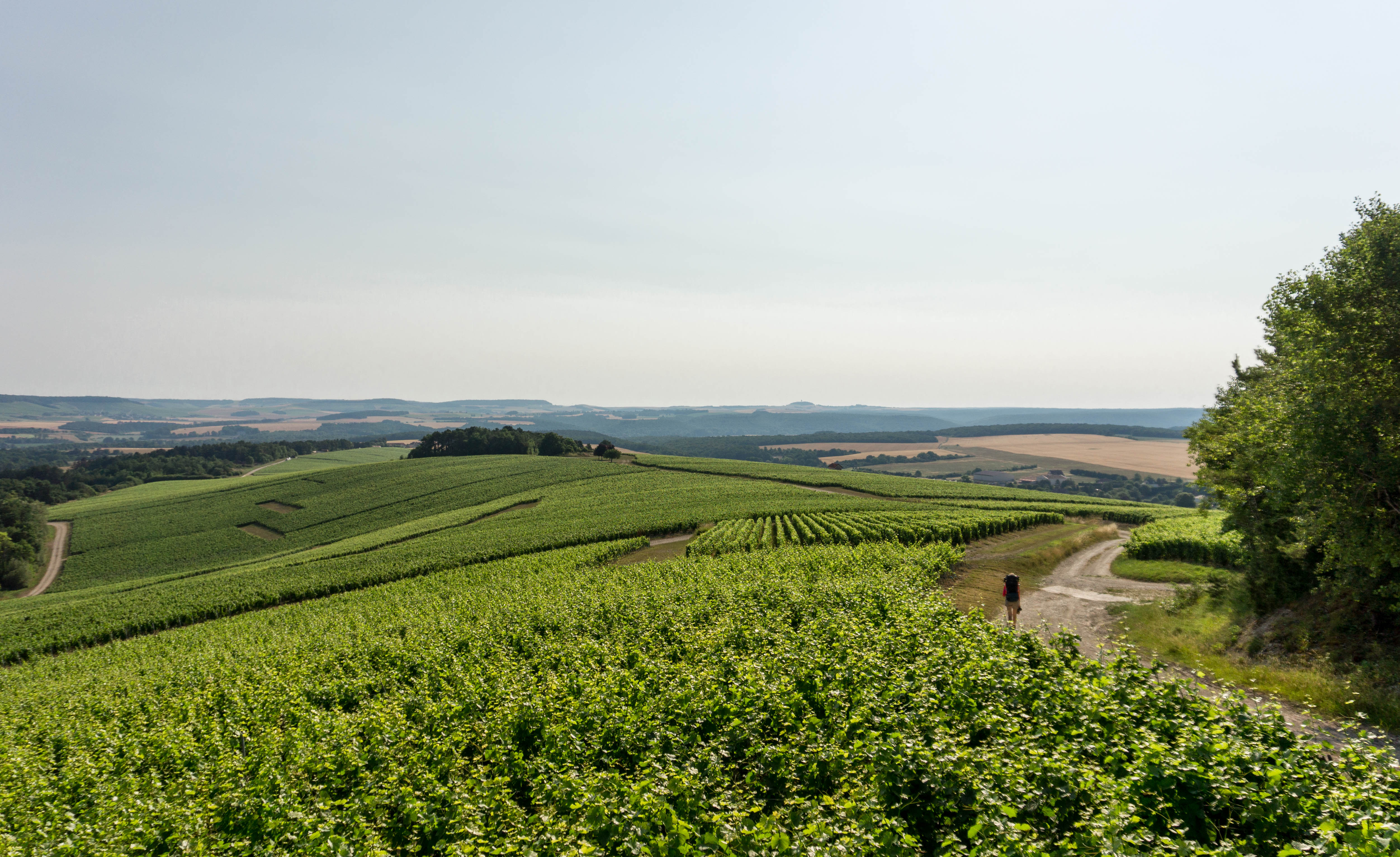
We walked straight up those steep slopes, grumbling a bit after weeks of flat land. But for the first time ever, we could look back at where we’d come.
Since leaving Canterbury, we had walked 575km; a weird, weird feeling.
We thought of all the places we had been, who we had met, where we had stayed: monasteries; locals’ guest beds; village halls; or that pilgrim house in Brienne, decorated with stag heads and right next to a secure mental health facility?
The Via Francigena is a strange, adventurous road. A road with Switzerland now on the horizon.
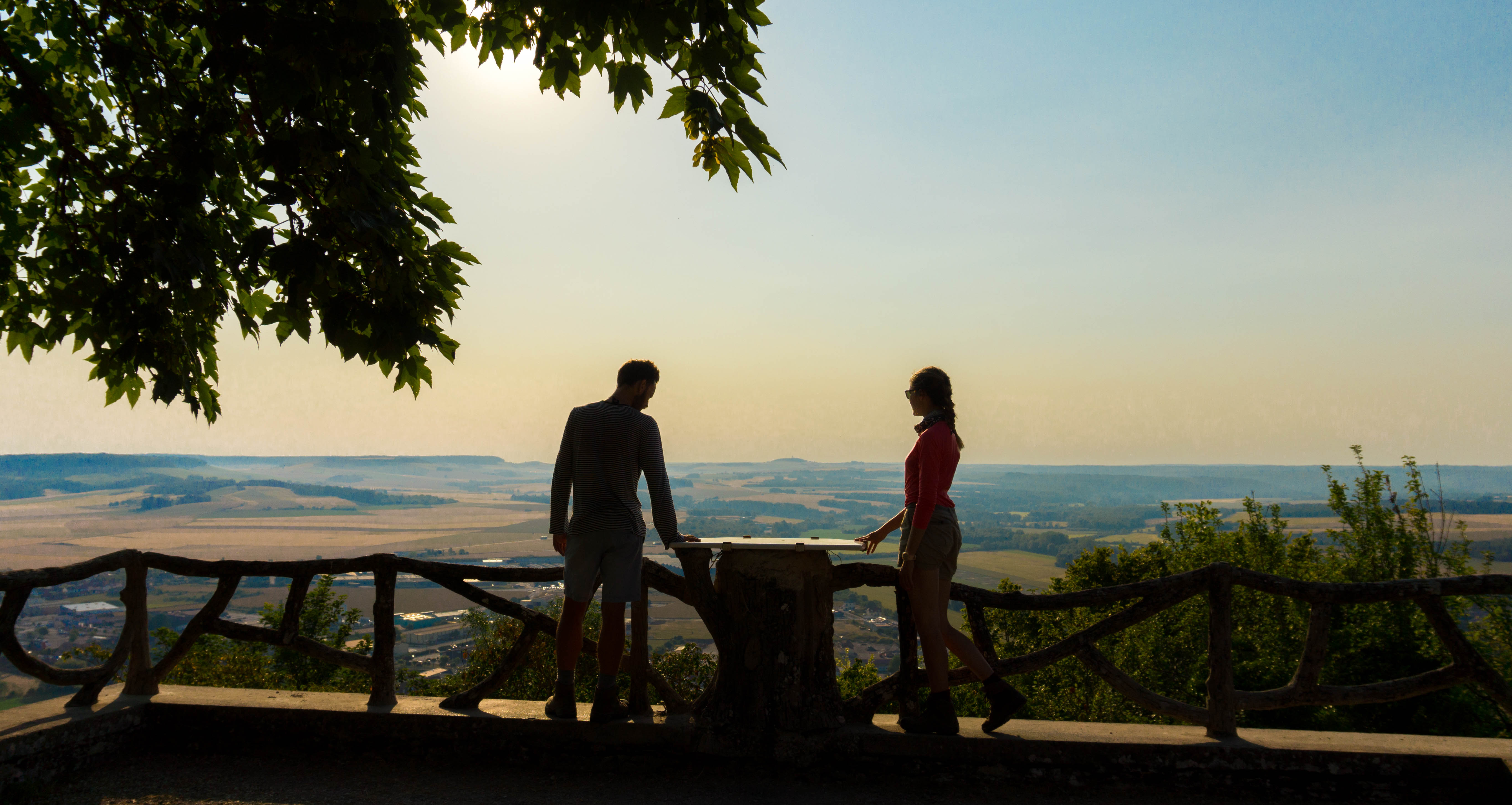

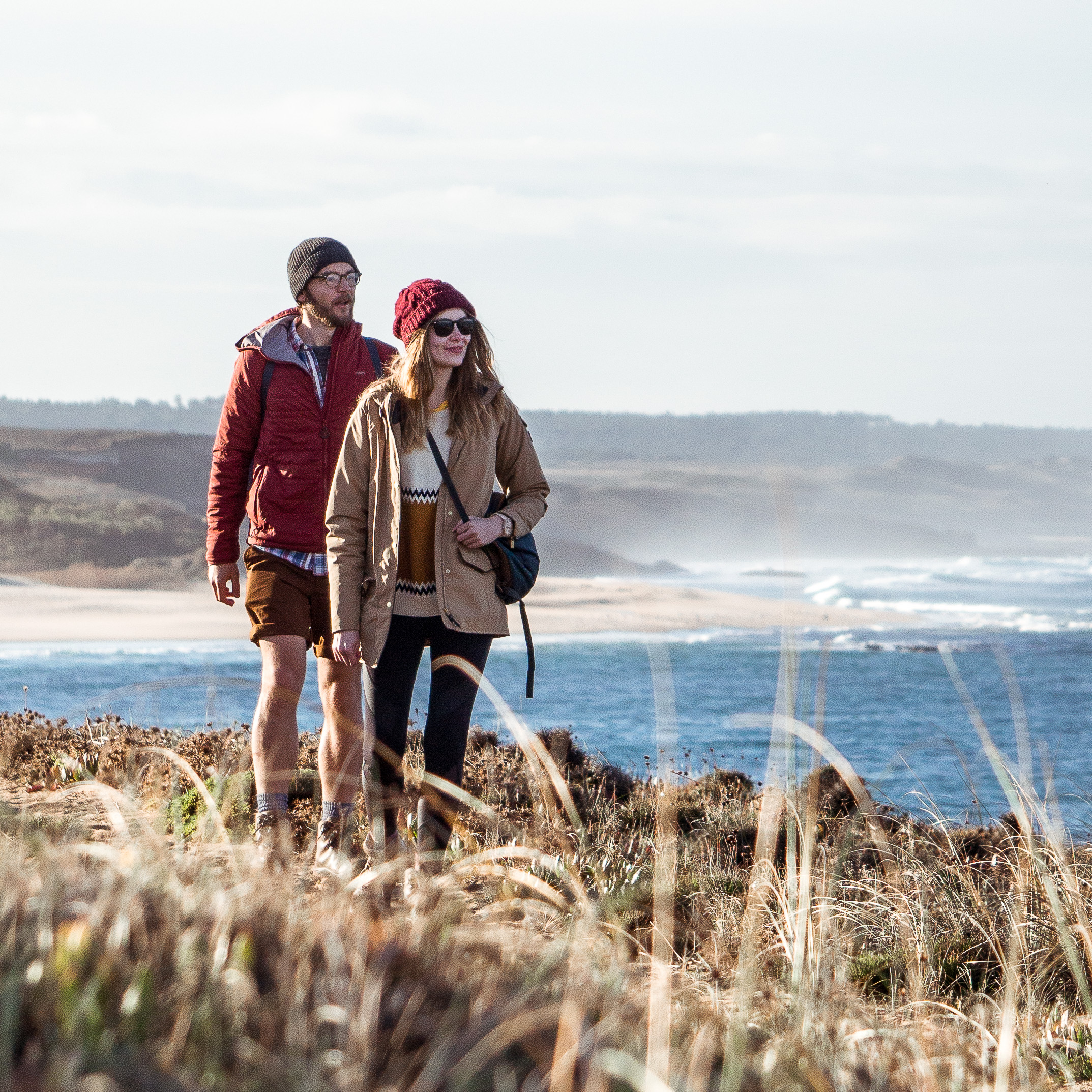
Loving your photos. What a fantastic journey!
Thank you Barbara!
Nel, you are a Beautiful writer. What an amazing trip. You both are doing amazingly well.
We are giving you strength to carry on to your next destination
I’m reading this in the departure lounge of Auckland Airport straight after news stories about a severe storm coming north (I am getting out at the right time). There is snow down south and theInterislander has been suspended until further notice. I’m pretty jealous of your hest right now!
Keep writing the blog and expanding your fantastic photo album, I’m hpoked on the story!
‘the pilgrim house in Brienne, decorated with stag heads and right next to a secure mental health facility’… sounds like my kinda thing for sure! I am thoroughly enjoy reading your blog as i sit at my office desk. You are both doing a great job!
Ha ha – thank you Tara!
that roman road photograph brings back memories of its namesake in Spain… but it is cobbled, not smooth’ish!!!!!
It was a test the Roman Road, but again one we look back on fondly. Locals along that section were incredibly generous and supported us with food, drink and even places to stay!